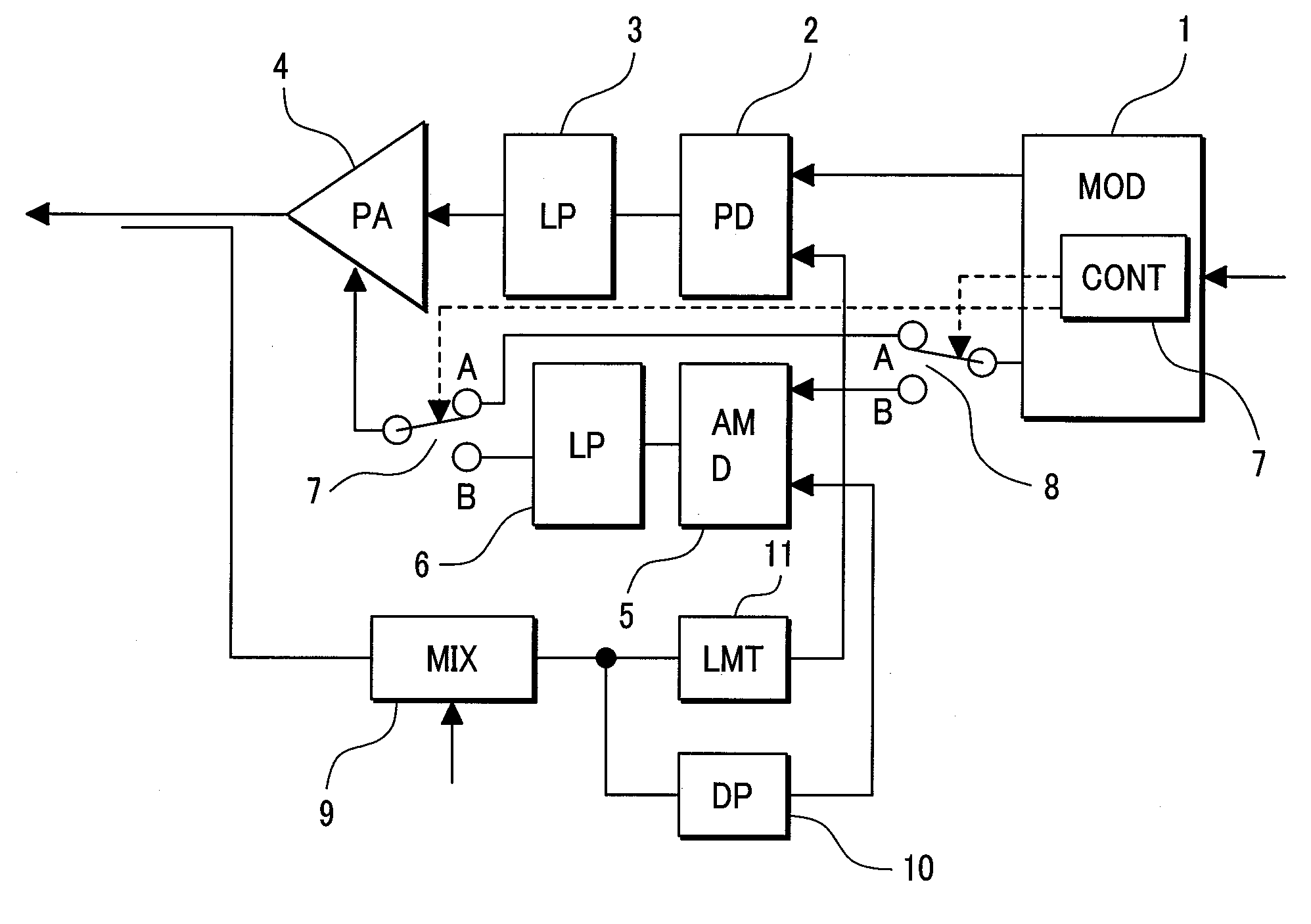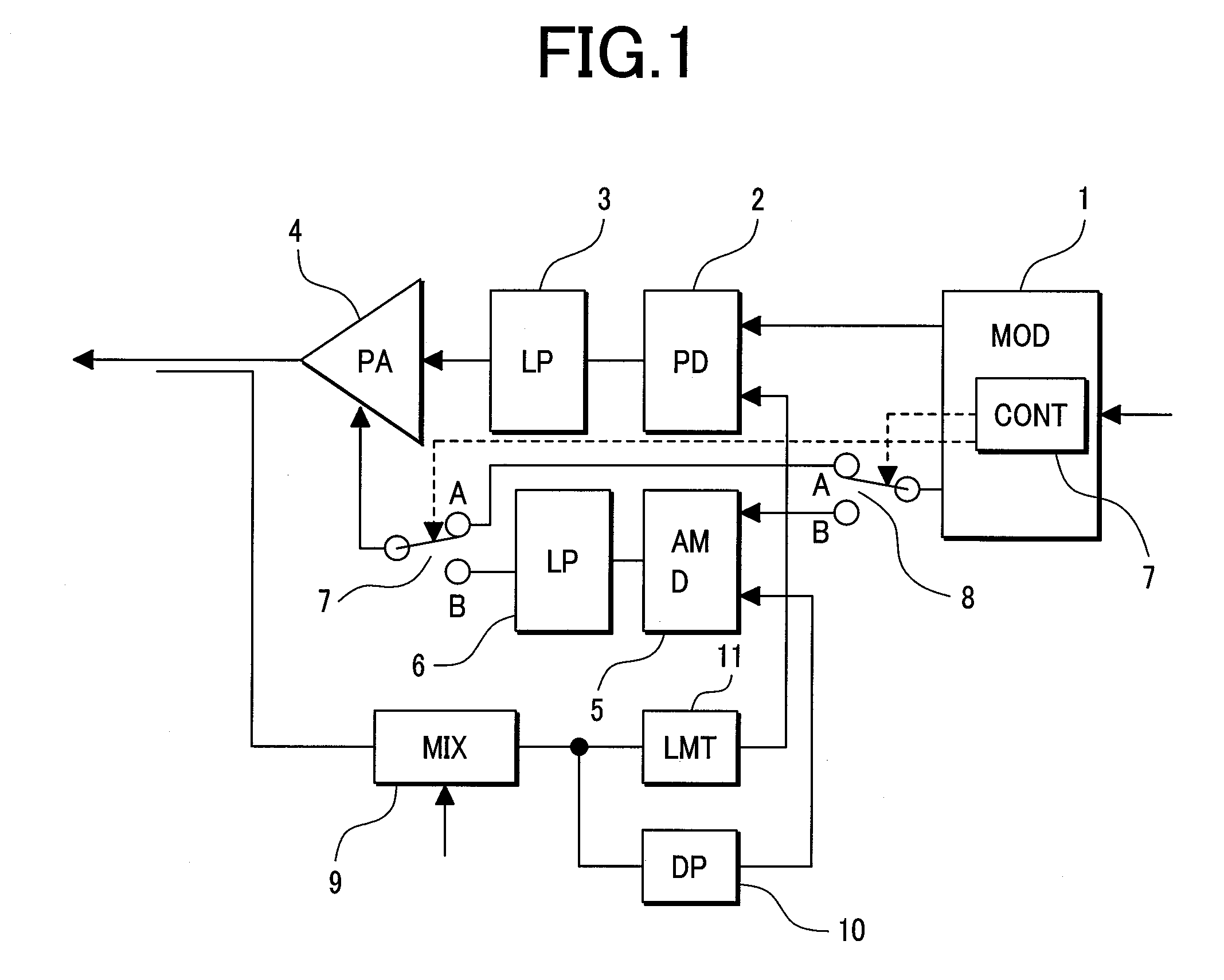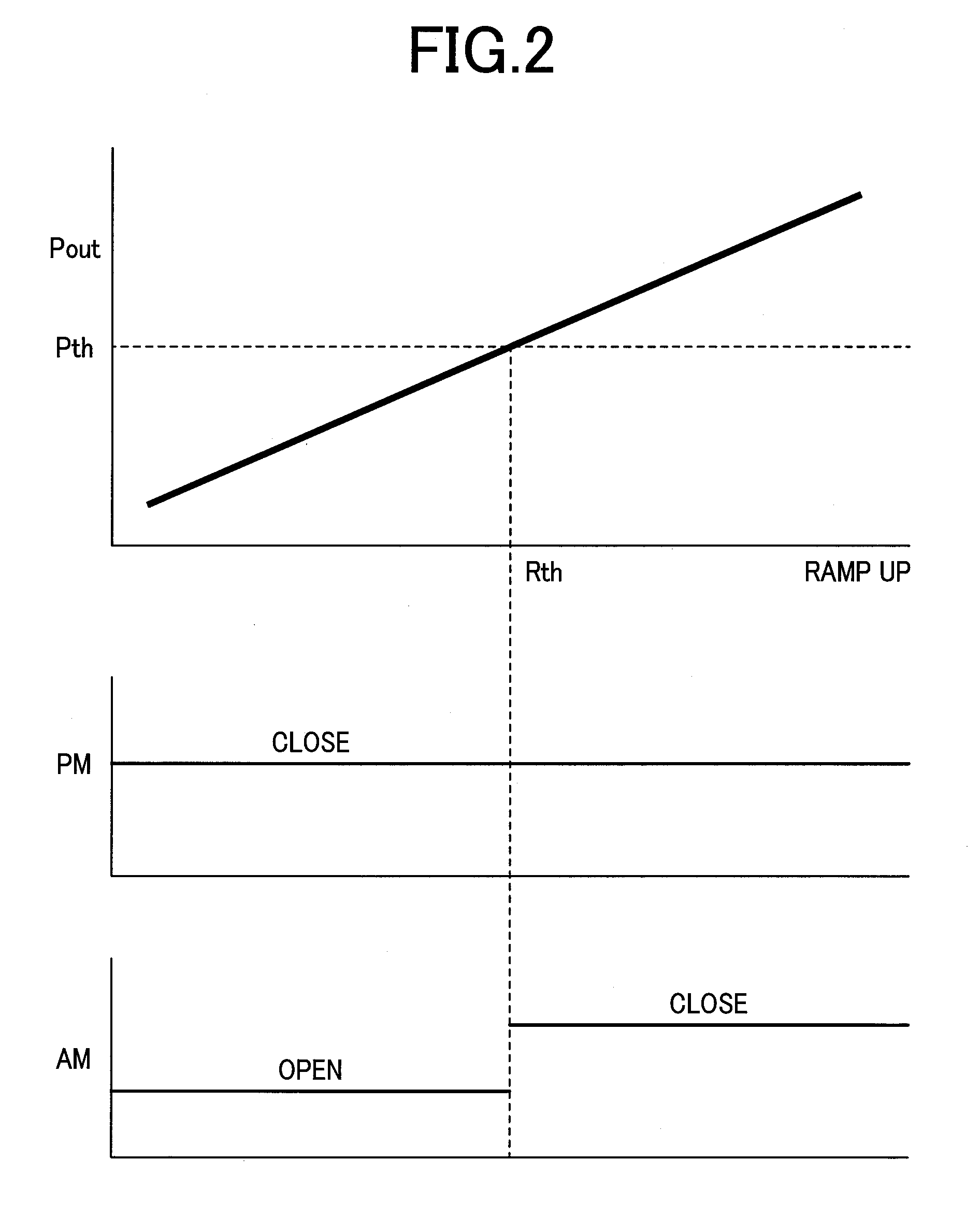Transmitter circuits and apparatus of wireless application
a transmitter circuit and wireless application technology, applied in the direction of amplification control details, supply voltage varying control, transmission, etc., can solve the problems of current consumption increasing and the problem of solving the problem, and achieve the effect of reducing the current consumption required to deliver the moderate or small power outpu
- Summary
- Abstract
- Description
- Claims
- Application Information
AI Technical Summary
Benefits of technology
Problems solved by technology
Method used
Image
Examples
first embodiment
[0036]To begin with, a transmitter circuit in accordance with the first embodiment of the present invention will be described in conjunction with FIG. 1 to FIG. 9.
[0037]First, the fundamental configuration of the first embodiment will be described in conjunction with FIG. 1 and FIG. 2. FIG. 1 shows a transmitter circuit in accordance with the first embodiment of the present invention. FIG. 2 is an explanatory diagram concerning the operation of the transmitter circuit shown in FIG. 1.
[0038]The transmitter circuit shown in FIG. 1 is employed in an apparatus for wireless applications that is suitable for the EDGE which is a broadband transmission facility evolved from the GSM. Reference numeral 1 denotes a modulator. The modulator 1 receives transmittal information (a ramp signal or transmittal data) from a baseband circuit (not shown), and produces and transmits a transmittal signal or a phase- or amplitude-modulated signal. A phase-modulated (PM) signal produced by the modulator 1 i...
second embodiment
[0057]Referring to FIG. 10 to FIG. 15, the second embodiment of the present invention will be described below. FIG. 10 shows the major portion of a transmitter circuit in accordance with the second embodiment of the present invention. FIG. 11 shows an operating timing signal generation circuit employed in the second embodiment. FIG. 12 is an explanatory diagram concerning the operation of the second embodiment.
[0058]In FIG. 10, there are shown a modulator 1, a phase detector 46, a loop filter 3 composed of a transmittal oscillator and a filter 48, a power amplifier 4, and an antenna switch 61. The power amplifier 4 includes a heterojunction bipolar transistors (HBTs) connected in multiple stages, a bias circuit 28, a coupler 49, a wave detection circuit 50, and an error amplifier 51. Moreover, components constituting a phase locked loop or an amplitude loop include an amplitude comparator 47, a variable amplifier 52, a stepping gain control amplifier 53, a variable amplifier 54, a l...
third embodiment
[0080]FIG. 16 and FIG. 17 show the third embodiment of the present invention. FIG. 16 shows a transmitter circuit in accordance with the third embodiment of the present invention. FIG. 17 shows the operating timings of the present embodiment. In the present embodiment, unlike the first embodiment, a buffer amplifier 400 is interposed between the loop filter 3 and power amplifier 4 while being included in a radiofrequency IC. A bypass switch 410 is connected in parallel with the buffer amplifier 400. A feedback control signal is fetched from the output terminal of the buffer amplifier 400 within the radiofrequency IC. A selection switch 420 through which the routing of the output of the mixer 9 to the control input terminal of the power amplifier 4 and the routing thereof to the input terminal of the buffer amplifier 400 are switched is included in the radiofrequency IC. The switching control circuit 700 transmits a control signal with which the connections through the selection swit...
PUM
 Login to View More
Login to View More Abstract
Description
Claims
Application Information
 Login to View More
Login to View More - R&D
- Intellectual Property
- Life Sciences
- Materials
- Tech Scout
- Unparalleled Data Quality
- Higher Quality Content
- 60% Fewer Hallucinations
Browse by: Latest US Patents, China's latest patents, Technical Efficacy Thesaurus, Application Domain, Technology Topic, Popular Technical Reports.
© 2025 PatSnap. All rights reserved.Legal|Privacy policy|Modern Slavery Act Transparency Statement|Sitemap|About US| Contact US: help@patsnap.com



